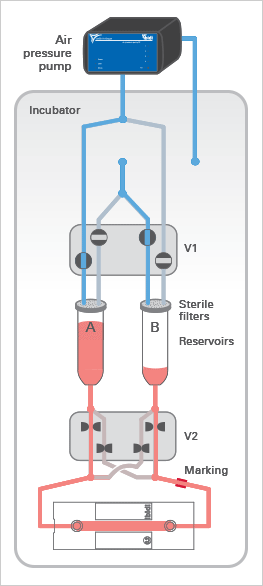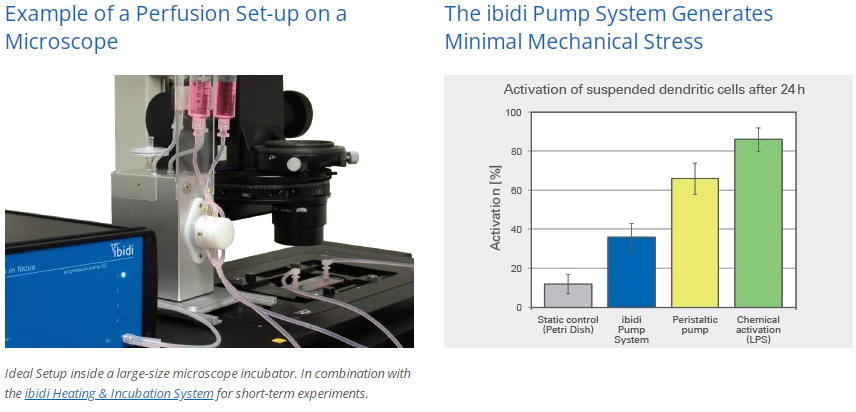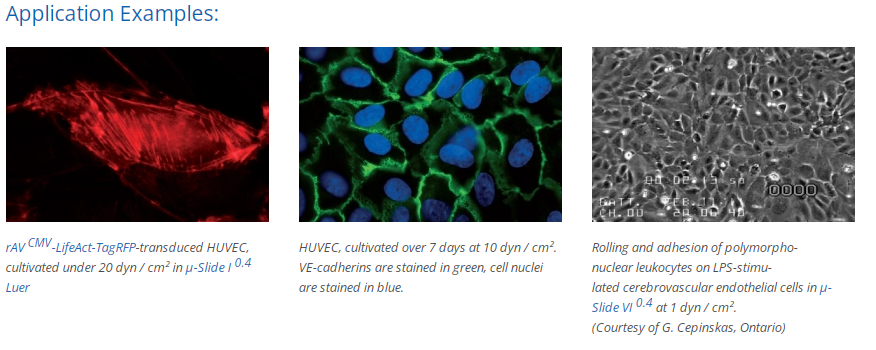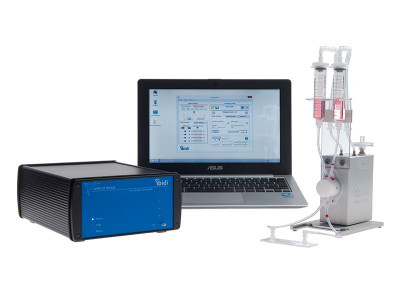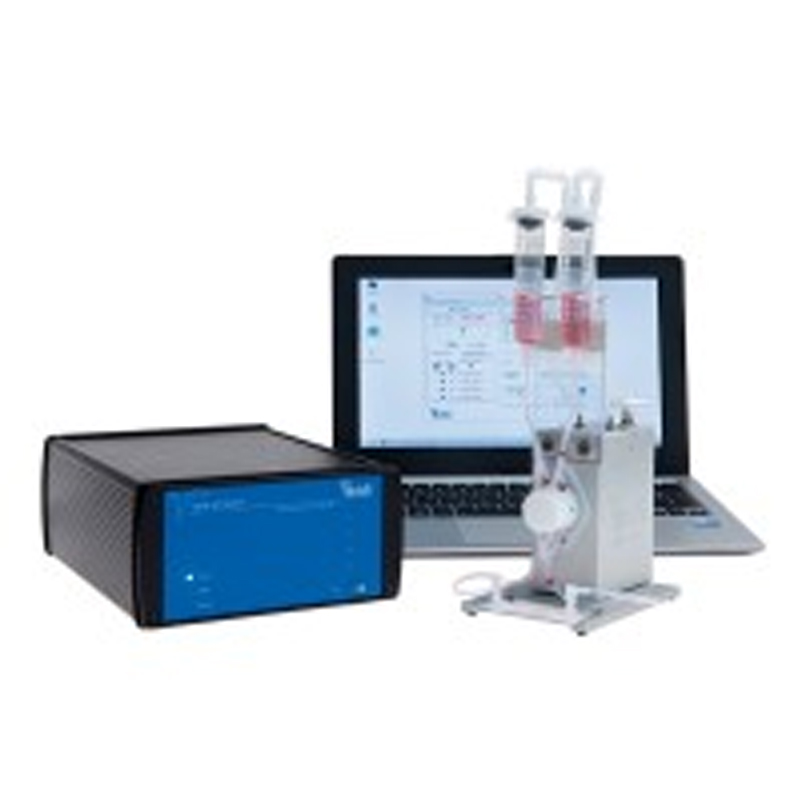*Defined shear stress in long-term culture (e.g., endothelial cells, kidney, or biofilm)
*Live cell imaging and immunofluorescence for analyzing shear stress response
*Mimicking shear stress conditions in microcapillary, venous, and arterial flow
*Rolling and adhesion of suspended cells on substrates
*3D cell culture: interstitial flow
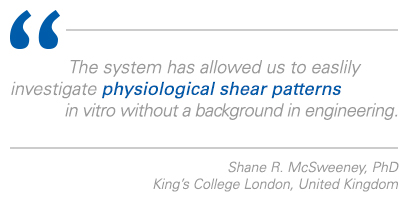
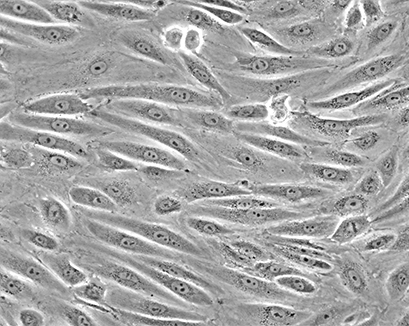
Technical Features:
Operates up to four parallel Fluidic Units per ibidi Pump
Flow characteristics: all flow types are laminar
Some examples:
Unidirectional flow simulates veins or small arteries
Oscillating flow simulates disturbed conditions at vessel branchings or valves
Pulsatile flow simulates arterial conditions
Wide range of flow rates (ca. 0.1–50 ml/min*) and shear stress (ca. 0.1–200 dyn/cm2*)
Working volume: 2.5 ml / 12 ml / 50 ml
Suitable for all μ-Slides with Luer adapters
Also suitable for home-made flow chambers
Compatible with all incubators
Software-controlled flow rates and shear stress
* Depending on the Perfusion Set and Channel used.
System Overview:
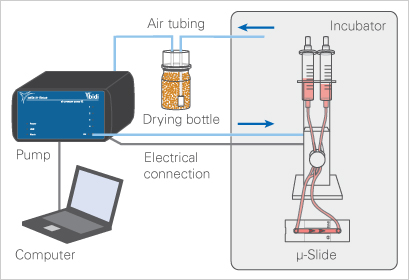
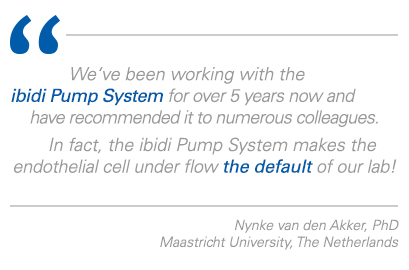
The ibidi Perfusion System Perfectly Reflects the Natural Environment of Cells Under Flow Conditions
The ibidi Pump System consists of two main components: The ibidi Pump (computer controlled air pump, placed outside the incubator) and the Fluidic Unit (holder for cell media reservoirs and μ-Slide, tubing, and electrically controlled valve set, placed inside the incubator). By using this "split" approach, the closed circulation of the medium can be assembled separately in the laminar flow hood and transferred to the microscope or the incubator, without compromising the sterility of the system. The open architecture using the Luer connectors allows the use of any kind of flow devices. The PumpControl software controls the pressure, and subsequently the shear stress acting on the cells, and provides the possibility to program complex flow patterns.
Placing the Fluidic Unit inside a large-size microscope incubator allows for running long-term perfusion assays directly on the microscope. A defined temperature and CO2 concentration is assured over the whole perfusion, which is necessary for avoiding air bubbles. For short-term experiments, the usage of a small incubator, hosting the Fluidic Unit, next to the microscope is sufficient.
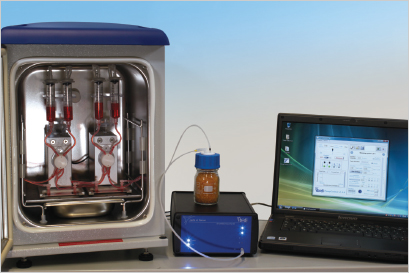
Principle of Unidirectional Flow
Applying pressured air to the reservoirs of the Fluidic Unit moves the medium and generates the flow in the μ-Slide channels. In order to avoid wasting any medium, the liquid is pumped back and forth between reservoir A and reservoir B by switching the valve V1.
To assure a unidirectional flow in the channel, the other valve V2 is switched simultaneously. As the tubing parts inserted in the valve V2 are criss-crossed, the medium is always directed to the same end of the channel slide.
